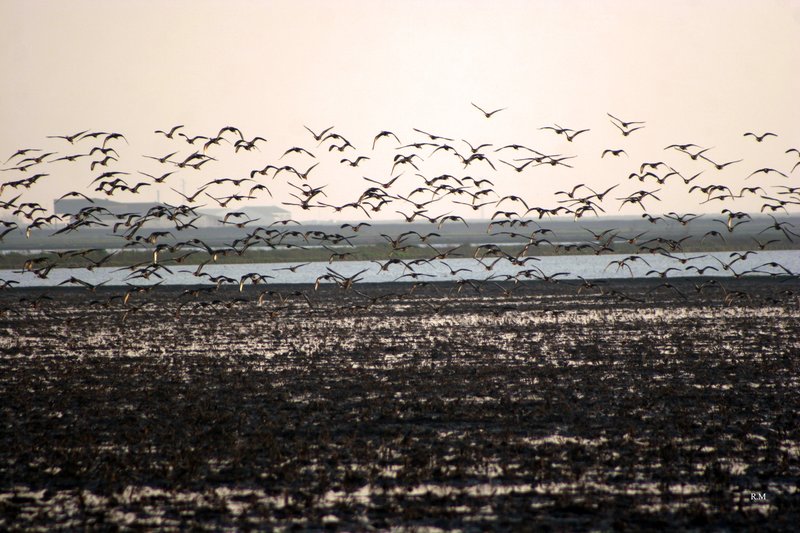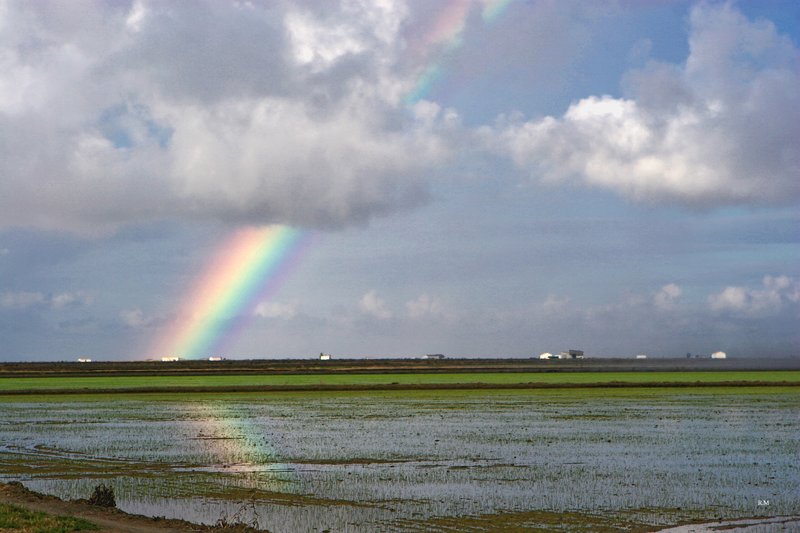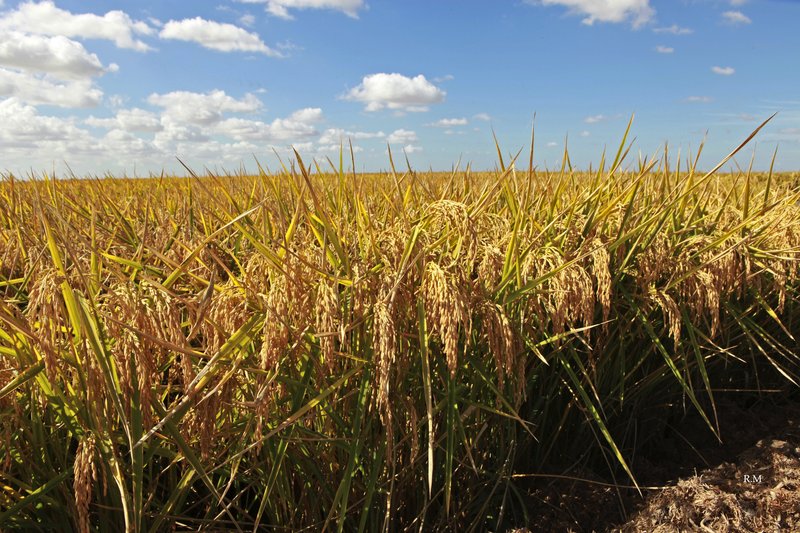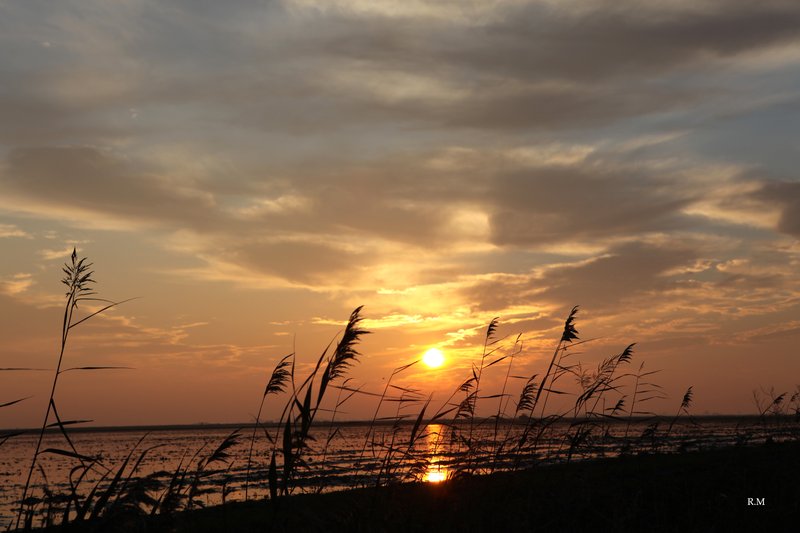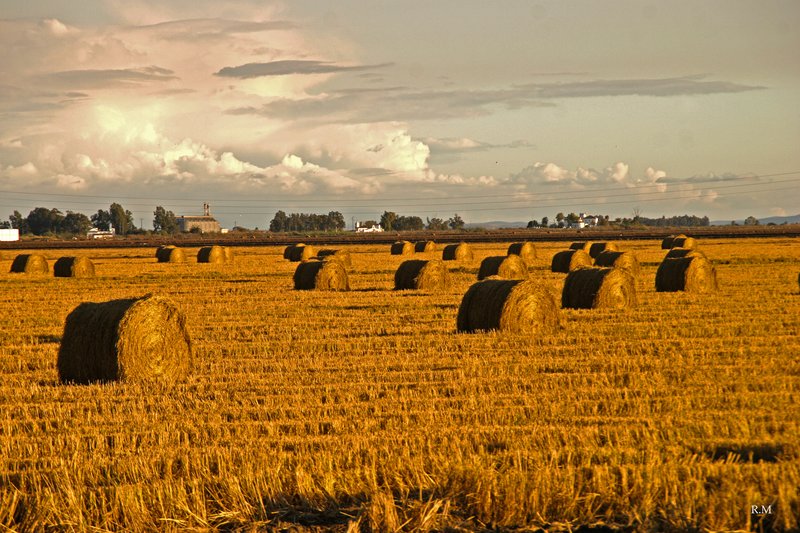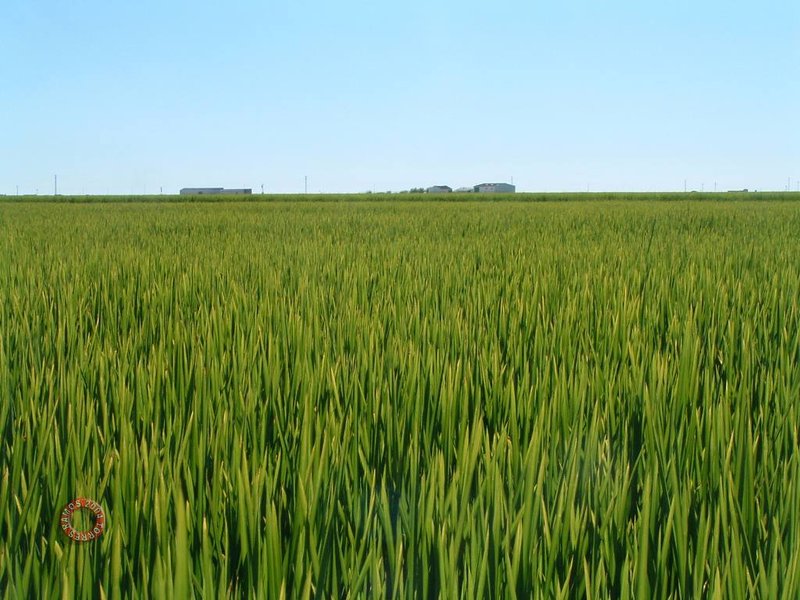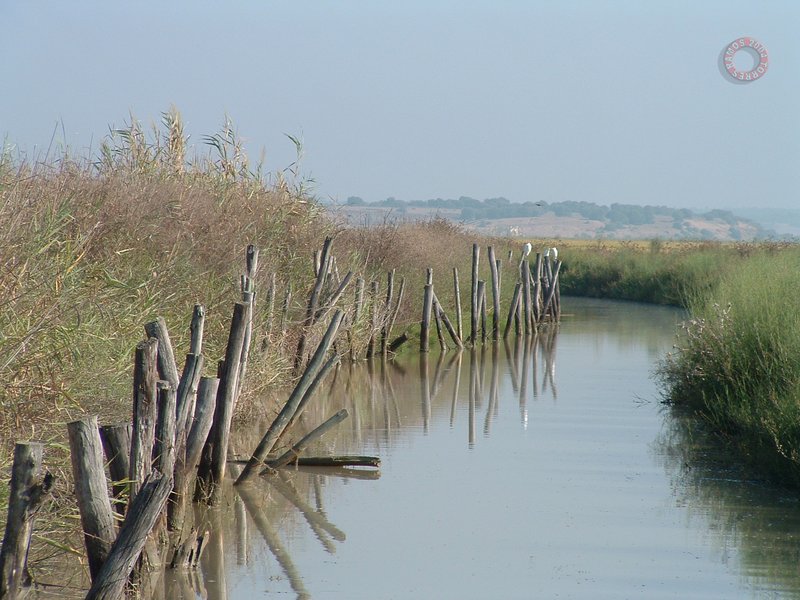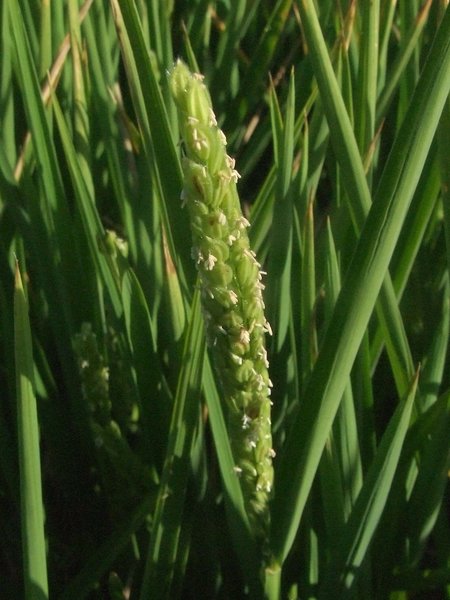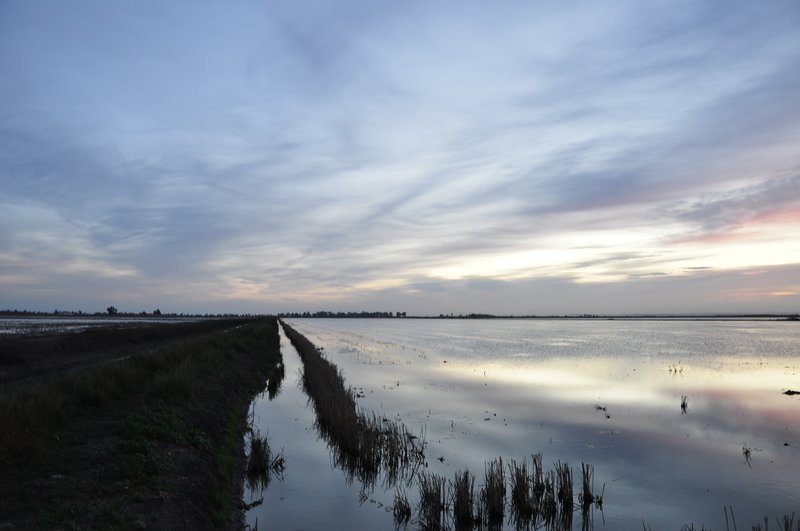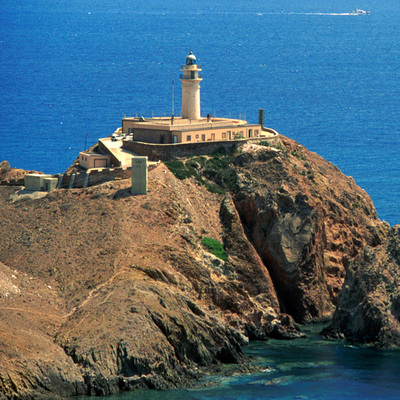Rice Route in the province of Seville
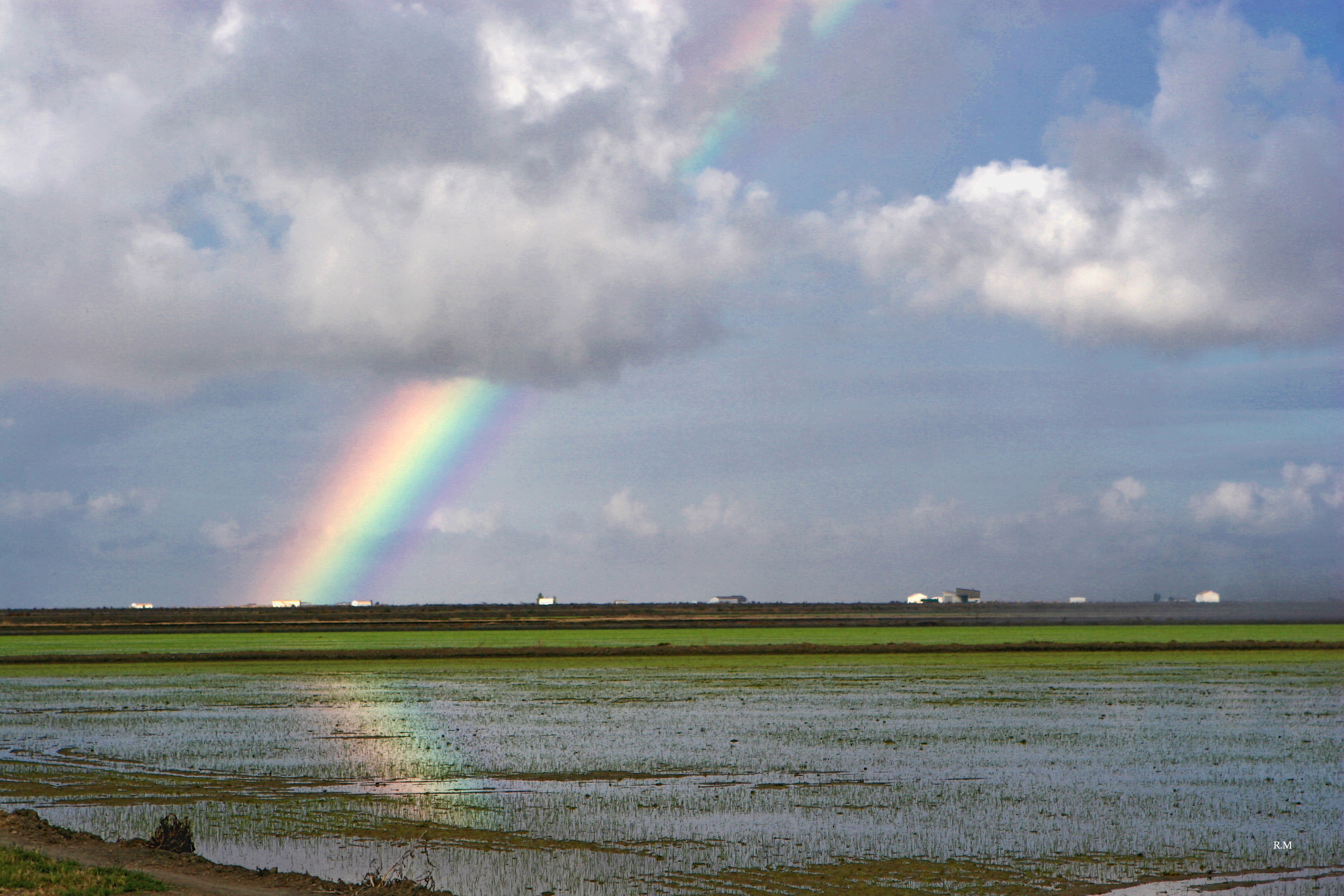
The Marismas del Guadalquivir, the area where most of this route takes place and which have a surface area of approximately 2,000 km² thanks to the marine and river deposits of the alluvium, form an immense coastal inlet.
During the rainy season, these marshes are flooded due to their flat terrain, their proximity to sea-level and the impermeable nature of the material of their subsoil.
Rice in Seville, the leading province in Spain for production of this cereal, is centred on the right bank of the Guadalquivir river, with an area of up to 36,654 hectares of crop and a harvest of more than 350,000 tonnes making over 40% of Spanish production.
The entire route revolves around the lower basin of the Guadalquivir, before entering Cadiz linking the two banks of the “Río Grande” (Al-Wadi Al-Kabir, in its Arab etymology) so that visitors can follow the coastal towns of this rich area of Andalusia.
Between Seville and the estuary, there is an extensive wetlands: Las Marismas del Guadalquivir, but there are natural places of great importance: the Brazo del Este natural park, Utrera Nature Reserve, Lebrija-Las Cabezas Nature Reserve, the Guadiamar Green Belt, the Dehesa de Abajo and Cañada de los Pájaros Nature Reserves; rice and water are our travelling companions, and birds — travellers who come and go as they wish.
This space, furthermore, is the essential habitat for spectacular birds, more than 275 species that, whether for nesting or wintering, also want to enjoy the possibilities that this area provides.
This is why this area is located at a strategic location, half-way between Seville city and Doñana, with easy access on both banks by road, without forgetting the appeal of linking these two banks using the ferry that crosses the Guadalquivir at Coria del Río.

